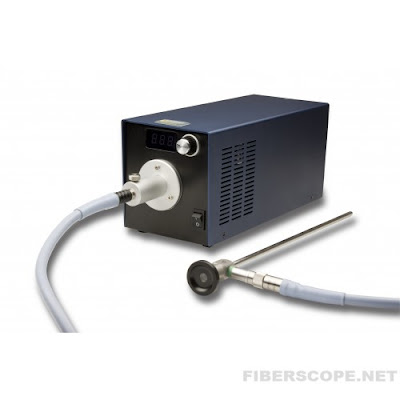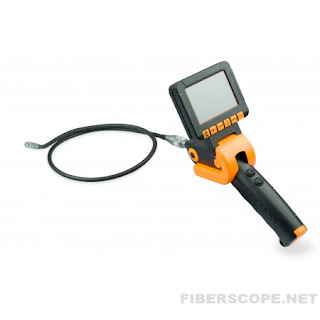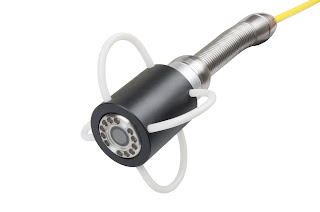Optical endoscopes or borescopes are very popular for inspection of hard-to-reach places. Rigid borescopes provide better image. The image is transmitted through a system of rod lenses to the eyepiece. There are also flexible borescopes or fiberscopes, which can have articulation of tip, and image is transmitted through flexible glass fibers.
Illumination of objects under study is performed by external light sources. The better illumination - the better inspection of important objects. Light is generated and transmitted to the borescope by a special light cable or light guide that connects the illuminator and borescope. Such illuminators can be Halogen, Xenon, Metal Halide or LED. They all have their own pros and cons. Halogen, metal halide and xenon light sources have a high intensity, but the life span of their bulbs is generally very limited, some hundreds of hours. Spare bulbs are costly.
Today LED light sources become more and more popular. Due to achievements of LED technology, LED-based illuminators get more light intensity and now it equals or exceeds halogen or xenon illuminators.
 A new LED illuminator represents the next generation of powerful light sources for the widest application. Now you can stop using fragile and sensitive halogen, xenon, or metal halide light sources.
A new LED illuminator represents the next generation of powerful light sources for the widest application. Now you can stop using fragile and sensitive halogen, xenon, or metal halide light sources.
This unit is a very cost-effective solution with extremely long life expectancy (more than 60 000 Hrs, longer than a 250W halogen, or 100W Xenon bulb), while at the same time the light output, at 650K Lux, easily replaces even the 250W halogen light sources.
Light intensity is controlled via a dimmer switch with an LCD display, which provides you with a quantified number for the illumination intensity.












